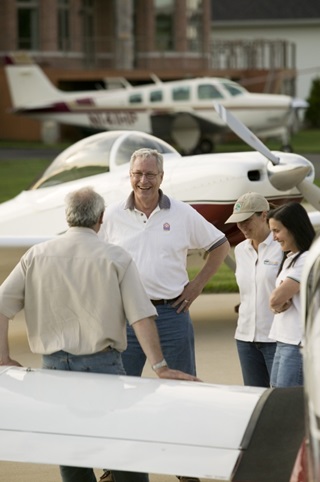 Over the past few months I’ve had the opportunity to speak with many flying club members and leaders. Although our conversations varied in subject, I always returned to one very important question, “What makes your flying club so special?” It’s no secret that flying clubs have an unmatched camaraderie in aviation, but how does a club develop and strengthen that unity? From clubs in formation to those with decades of growth, bonds continue to grow that promote an active pilot community and a thriving airport culture.
Over the past few months I’ve had the opportunity to speak with many flying club members and leaders. Although our conversations varied in subject, I always returned to one very important question, “What makes your flying club so special?” It’s no secret that flying clubs have an unmatched camaraderie in aviation, but how does a club develop and strengthen that unity? From clubs in formation to those with decades of growth, bonds continue to grow that promote an active pilot community and a thriving airport culture.
Sorting through the varied responses to my question, a trend became apparent. Flying clubs build on a commitment between their members and the organization, which roots itself as a byproduct of the organization structure. The majority of flying clubs are based on an equity (or partial ownership) model, where each member owns a fraction of each club aircraft. Clubs that operate under this structure obtain the benefit of an ownership mentality. When club members feel like they have a stake in the airplane, they often become more devoted to the organization. Commitment of this level also is possible in non-equity models by empowering the members to aid in the club decision making process via monthly meetings. This mentality is a commonality amongst flying clubs, and is one of the unique factors that set them aside from the aircraft rental market.
Building on that solid foundation, clubs have an opportunity to strengthen their unity with social gatherings and events. Most clubs host regular meetings, but clubs that differentiate their meetings by creating true community ‘get-togethers’ generally have greater participation and better member retention. Several clubs have ties to the local EAA chapters and airport commissions that help them stay active in the community while establishing a presence for themselves.
“The airport should be an escape from reality, your hobby, and your sanctuary,” one flying club manager from the North East said. “Our monthly collaboration binds the group together. Sure, we address issues and finances, but that’s just a small part of why we gather together.”
So, what makes a flying club special? It’s my belief that it’s the members and the leaders. Members are all unique, and bring something different to the table. The strongest flying club leaders can identify each member’s role, and enable them to grow and develop as part of the club’s social structure. Participation and investment should be the expectation of every flying club member, and the club as a whole should foster an environment that facilitates that opportunity. Tune in to next month’s Webinar where we’ll discuss the role that socialization plays in member retention and flying club growth.
Kelby Ferwerda: [email protected]
